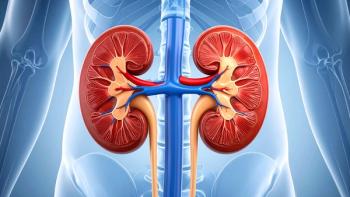
Drug Exposure, Disease Characteristics Not Linked to Increased Mortality Risk in Patients with Multiple Myeloma Who Contracted COVID-19
Specific disease characteristics of, and treatments for, multiple myeloma were not associated with increased mortality risk in patients with multiple myeloma who developed COVID-19, according to data published in Journal of Hematology & Oncology.
Specific disease characteristics of, and treatments for, multiple myeloma were not associated with increased mortality risk in patients with multiple myeloma who developed COVID-19, according to data published in Journal of Hematology & Oncology.
“Limited studies describing the impact of COVID-19 both in the (United States) and abroad suggest a higher risk of hospitalization and poor outcomes including death in certain subsets of cancer patients,” the authors wrote. “The effect of COVID-19 on patients with (multiple myeloma), the second most common hematological malignancy, is of particularly great concern due to immunosuppression associated with the disease, and at this time remains incompletely understood.”
To characterize the population of patients with multiple myeloma at Mount Sinai Hospital who developed COVID-19, researchers conducted a retrospective analysis of 58 patients treated at the institution who were diagnosed with COVID-19 between March and April 2020.
More than half (52%) of the cohort were male and the patients had a median age of 67 years. The most common comorbidities patients presented with included, but were not limited to, hypertension (64%), previous or active smoking (37%) and Type 2 diabetes (28%).
Most of the cohort (54 patients) had multiple myeloma, while the remaining four had smoldering multiple myeloma. The cohort had received a median of 1.5 lines of therapy for their cancer, and 17% of the cohort had received more than four previous lines of treatment. The median time from diagnosis of multiple myeloma to COVID-19 infection was 29.8 months. Forty-one percent of the patients had received a previous autologous stem cell transplant for their cancer.
Eleven patients were not actively receiving treatment for their disease when they were diagnosed with COVID-19. Of the remaining patients, 28 were receiving Darzalex (daratumumab), 32 were receiving immunomodulatory drugs, 22 were receiving a proteasome inhibitor, five were receiving Venclexta (venetoclax) and 30 were receiving concomitant corticosteroids.
At the time of COVID-19 infection, 15 patients were in a complete or stringent complete response from their multiple myeloma. Additionally, 11 patients had a very good partial response, 13 patients had a partial response and two had stable disease.
The most common symptoms patients reported were fever (70%), cough (65%) and shortness of breath (45%). Thirty-six patients were admitted for inpatient care at a hospital, 23 of which were admitted to the Mount Sinai Hospital system. Seven patients required admittance to the intensive care unit during their hospitalization.
Of the 23 patients with multiple myeloma who were admitted to Mount Sinai Hospital with COVID-19, seven died. When including patients admitted to other hospitals, the mortality rate was 39%. All deaths were attributed to COVID-19.
Results of a multivariate analysis indicated that patient age over 70 years, male sex, Type 2 diabetes and a high cardiovascular risk profile were significantly associated with hospitalization. Non-white race, statin use and severe hypogammaglobulinemia were significantly associated with mortality in the hospitalized patient population, according to results of a univariate analysis.
The authors highlighted that the data did not demonstrate an association between increased mortality and multiple myeloma treatment and multiple myeloma-specific disease characteristics.
“This information would indicate that during the post pandemic phase, we do not have to change the management of myeloma patients,” they wrote. “However, earlier diagnosis of COVID-19 and prompt intervention especially for the vulnerable population identified is warranted to reduce the risk of mortality. As we reopen and move forward into a post-COVID-19 era, we will need to remain vigilant, particularly for select patient groups, and await effective COVID-19 treatments while balancing the need to manage patients’ myeloma.”
The authors noted, however, that there were some limitations to the study. For instance, the data were a retrospective reporting of a smaller cohort of patients from a single institution. As a result, the authors recommend that the results of this study must be confirmed by a larger series of data collected from several institutions.




